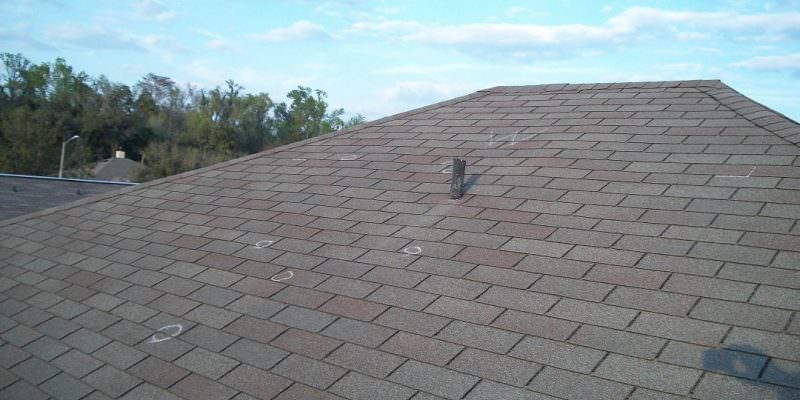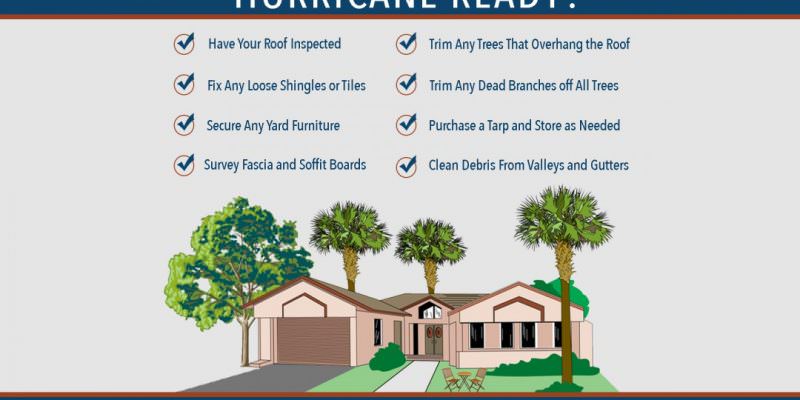During a hailstorm, your roof is vulnerable to damage and future repairs. Just how much damage depends on multiple factors including wind, size and density of the hail, and the type of roof covering. Continue reading “Recognizing Hail Damage”


During a hailstorm, your roof is vulnerable to damage and future repairs. Just how much damage depends on multiple factors including wind, size and density of the hail, and the type of roof covering. Continue reading “Recognizing Hail Damage” →

During a hurricane your roof can be exposed to winds in excess of 155 mph. These winds have the potential to pull off roof shingles, tiles, or even the underlying roof deck. This is why we suggest checking the condition of your roof BEFORE a storm happens as well as after. A well-maintained roof is your best bet against hurricane winds.
Have Your Roof Inspected
Gulf Western Roofing does not recommend that any homeowner attempt to get on their roof. With our years of roofing excellence in Florida, Gulf Western Roofing is uniquely qualified to check the condition of your roof. From this inspection, we’ll be able to tell if there are any damages that must be attended to before the storm.
Fix Any Loose Shingles or Tiles
To reduce the chances of losing shingles or tiles by high winds, it is best to give attention to any missing, damaged, or loose shingles or tiles as these will increase the likelihood of water penetrating deeper into the roof.
Secure Any Yard Furniture
Your furniture and yard decorations can easily become flying projectiles that could damage your roof. We suggest tying them down or moving them indoors to the so they don’t get loose and damage the roof.
Survey Fascia and Soffit Boards
Take the time to walk the perimeter of your property and survey the fascia boards and the soffit boards. Fascia boards are located just below the metal trim of the roof and soffit boards are located below the roof overhang areas. Any signs of rotten wood in this area may indicate a potential problem during a hurricane. Making sure these roof areas are repaired will help secure the structure from possible wind damage at the eaves.
Trim Any Trees That Overhang the Roof and Trim Dead Branches off All Trees
High winds can break even the largest of tree limbs as easily as snapping a toothpick in half. It may seem obvious to trim the trees that overhang your roof, but it is also a good idea to have all off the trees surrounding your home trimmed just in case.
Purchase a Tarp and Store as Needed
After a storm, roofers run into a major supply shortage. Tarps are a rare find during this time and unfortunately they are a major necessity. Your best bet is to purchase tarps before the storm that way you are prepared.
Clean Debris From Valley and Gutters
Clearing all leaves and debris from roof areas and gutters will allow rainwater to flow them and prevent water from backing up and entering your home.
Extreme weather can be unpredictable. This became especially clear in Saturday’s tornado, which touched down in Southwest Cape Coral. According to the National Storm Damage Center, there are 5 factors that determine storm damage:
The tornado that touched down in Cape Coral on Saturday evening was measured as an EF-2 on the Enhanced F-scale, creating winds that reached 132 mph. EF-2 tornado’s create winds between 111 and 135 mph, placing Saturday’s tornado at the top of the EF-2 classification.
Although the storm was only on the ground for seven minutes, it traveled 3.5 miles, spanned 182 yards at its widest point, and left considerable damage in its aftermath.
During a storm, your roof is one of the most vulnerable components of your home. Obvious signs of roof damage that can be seen from the ground include tree branches or other debris that have fallen on top of your roof, missing shingles that can be seen laying in your yard and bent, and missing or damaged rain gutters.
While you may think that any structural damage after a tornado would be obvious, unfortunately, that is not always the case. After a severe storm, roof damage may not be visible from the ground and such damage often only becomes noticeable once costly leaks have occurred.
Gulf Western Roofing does not recommend that any homeowner attempt to inspect their roof themselves, especially after a severe storm. To ensure your safety, we are offering free inspections for home and business owners who have been impacted by Saturday’s storm in Cape Coral. As a licensed general contractor, we are able to inspect the exterior of your home as well as your roof. Our experienced professionals specialize in inspecting your home and roof, documenting any weather related damage, and working with your insurance company to determine the best possible result for you.
If you are in the Cape Coral area and were impacted by Saturday’s tornado storm, contact us today to schedule a free inspection.
Spending his entire life in Florida’s unique environment convinced him of the need for preservation in the midst of progress. Since he reached age three, Tim fished and spent countless hours on the water. He bought his own boat at age 12 to explore both fresh and salt water environments. After graduating with a bachelor’s degree in environmental studies, he worked for the Department of Environmental Protection where he was exposed first-hand to the diverse environmental challenges to Florida’s fragile ecosystems and the best means to protect its land and water surfaces.
Tim is certified in a broad range of crucial disciplines such as habitat assessment, wetland delineation, uniform mitigation assessment method (UMAM) and environmental rules and statutes.
Michael is a solution-oriented environmental operations professional with over 13 years of experience in both the public and private sectors. He’s established a successful track record of managing projects across a variety of disciplines, including sustainability, land management, environmental permitting, remediation projects and environmental restoration and monitoring.
He also carries and impressive list of certifications related to environmental protection and maintenance. In fact, Michael’s experience and special training in natural resource damage assessment earned him a deployment to the Deepwater Horizon oil spill site. He is a tremendous asset to the GWES team.
Rick Vaske, a Cincinnati, Ohio native and now Florida Full Time Resident since 2006.
Over the past several years Vaske has been working on developing solar education for students and the entire staff of Gulf Western Roofing, to help ensure safety and proper installation. His quest was to also be on the cutting end of industry-leading products as well as the sales staff to better educate customers.
This effort has resulted in Vaske to become a NABCEP Certified Sales Executive & NABCEP Certified Solar Installer and NABCEP Certified Exam Practitioner.
Taking solar education to a new level became Vaske’s goal as we rewrote the solar curriculum for The Department of Education. Vaske is the proud owner of The Florida Solar School where he teaches this curriculum at The Fort Myers Technical College for the Photovoltaic & Solar Thermal Design and Installation Course where they utilize Vaske’s Best Selling Solar Book: “Understanding The Power of Solar”.
Vaske believes that solar is truly making an impact in the world and it is his goal to leave this planet a better place for his young daughter, Mia. That is why sits on the Board of Directors for The SWFL Future Forestry Foundation, where Vaske works to plant a tree for every solar system installed.
It’s hard to keep Vaske from talking about sustainability and his passion for solar, so he has combined it with his original passion of radio. Catch Rick every Sunday morning as the host of Watts Up Radio on Sunny 106.3 WJPT.
Vaske has led Solar Install Companies to the following awards: six-time winner of the Lee Building Industry Association “Green Home of The Year” for Design & Installation, Parade of Homes “Best Upgrade” for Design & Installation of Multi-Solar System Install, two-time winner of Florida Weekly’s “Best Solar Company” and Vaske has been featured four-times in Florida Weekly’s “Market Pulse”.
With solar on the rise, many unqualified companies, sales associates and installers are joining the industry. This is putting homeowners and consumers at risk of being sold inferior products and receiving unsatisfactory installations. This along with copious amounts of misleading information on social media, and the Internet, Vaske felt it was important for homeowners and business owners who are interested in solar to get the TRUTH and the FACTS about solar, so they can make educated and cost-saving decisions.


